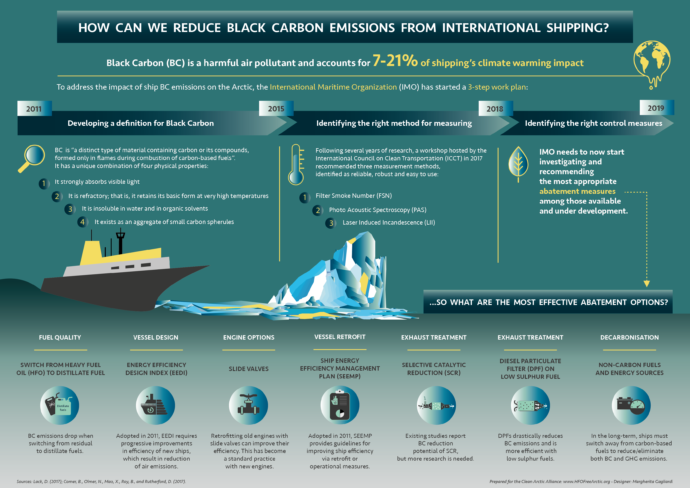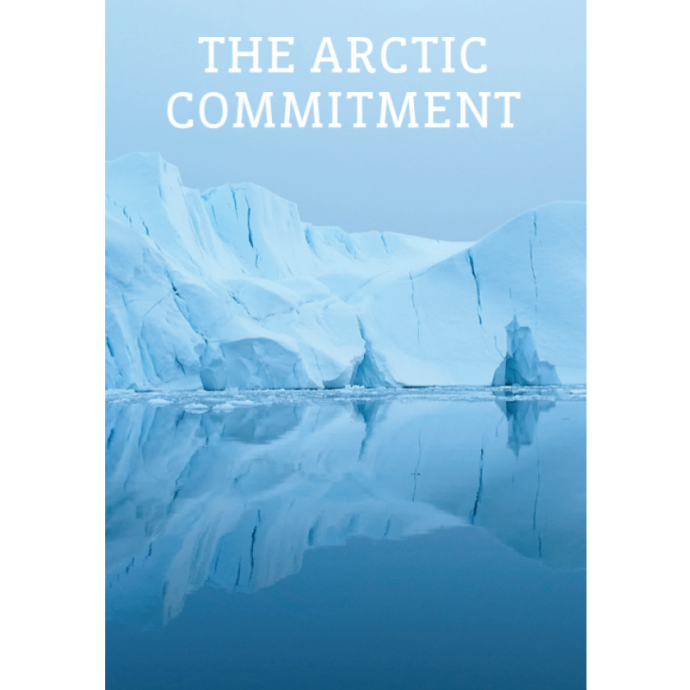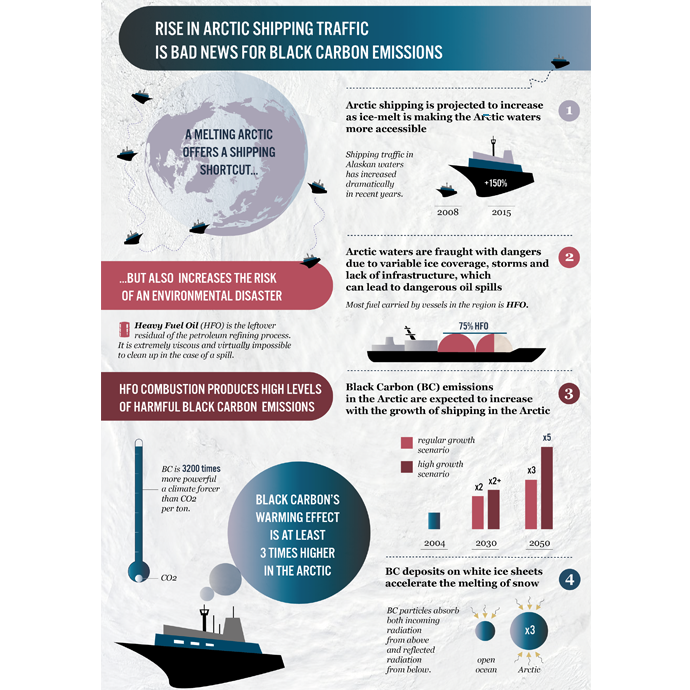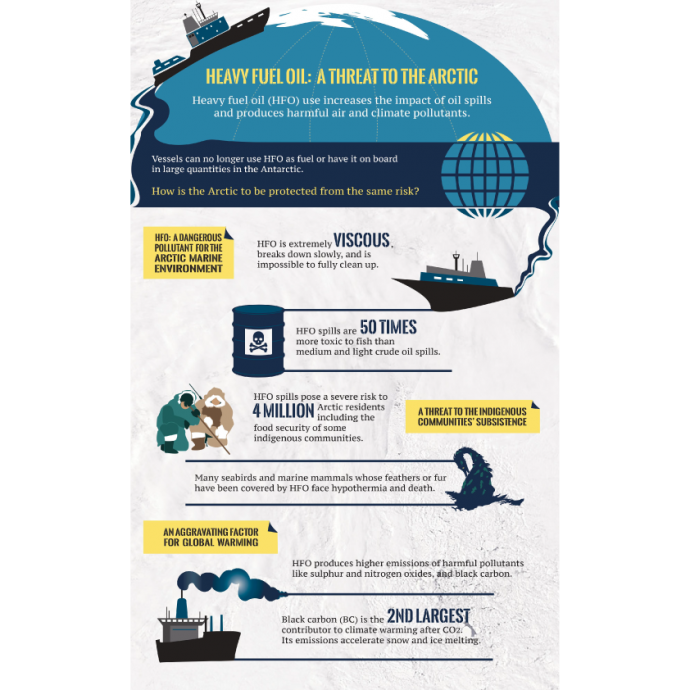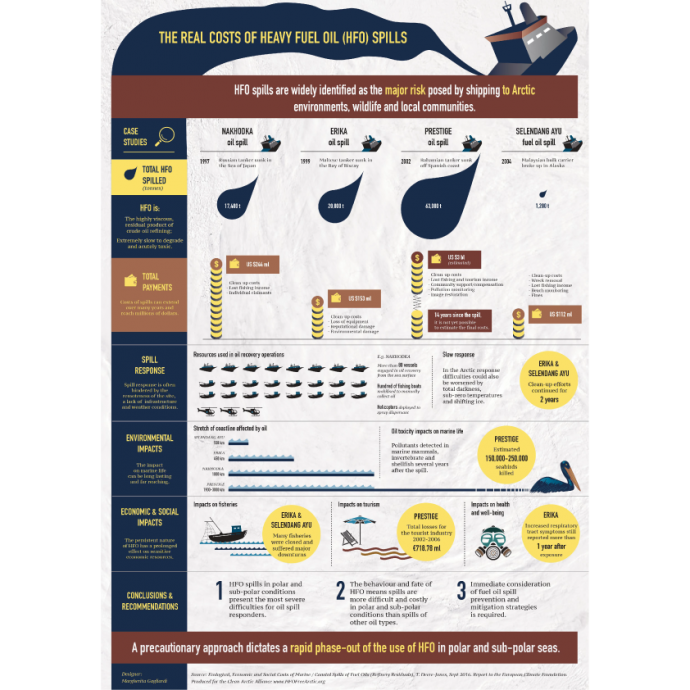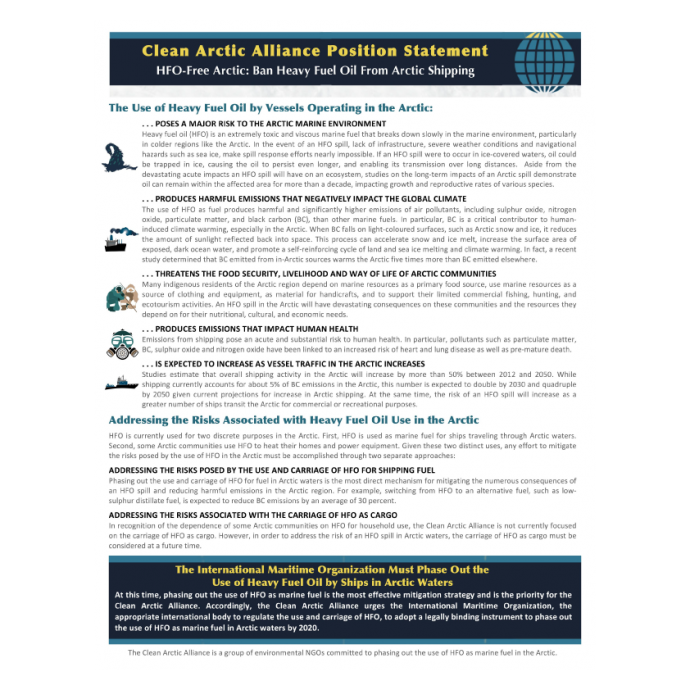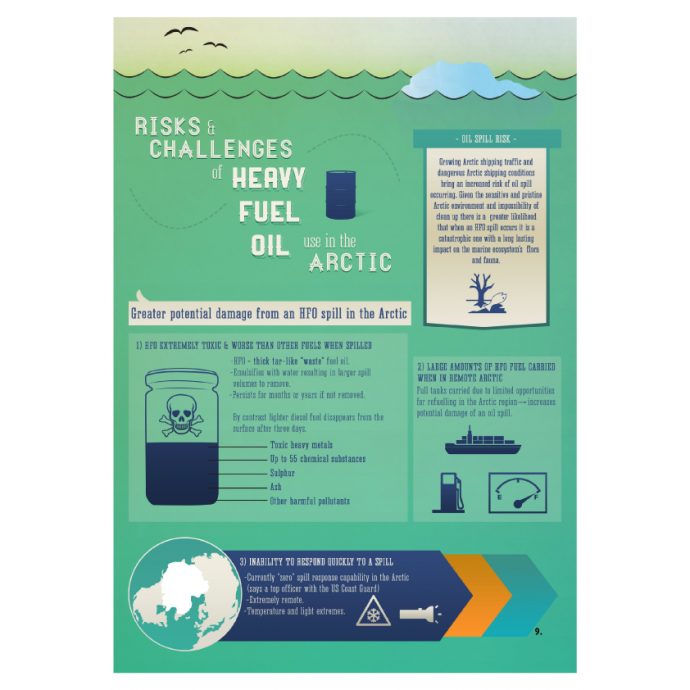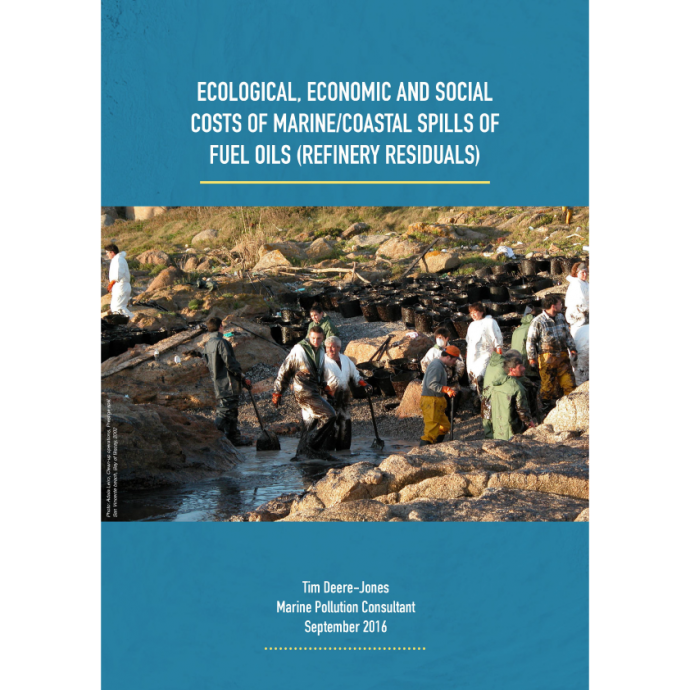Infographic: How Can We Reduce Black Carbon Emissions From International Shipping?
To address the impact of ship Black Carbon (BC) emissions on the Arctic, the International Maritime Organization (IMO) has been tasked with developing a definition for black carbon, deciding on best methodology for measuring black carbon, and identifying abatement options. A considerable number of black carbon abatement options exist with varying reduction potential of BC emissions. Some are readily available, some in development, some expensive, some cheaper. This infographic goes through some of the most effective abatement options and depicts their advantages and drawbacks based on the most up to date scientific literature.

